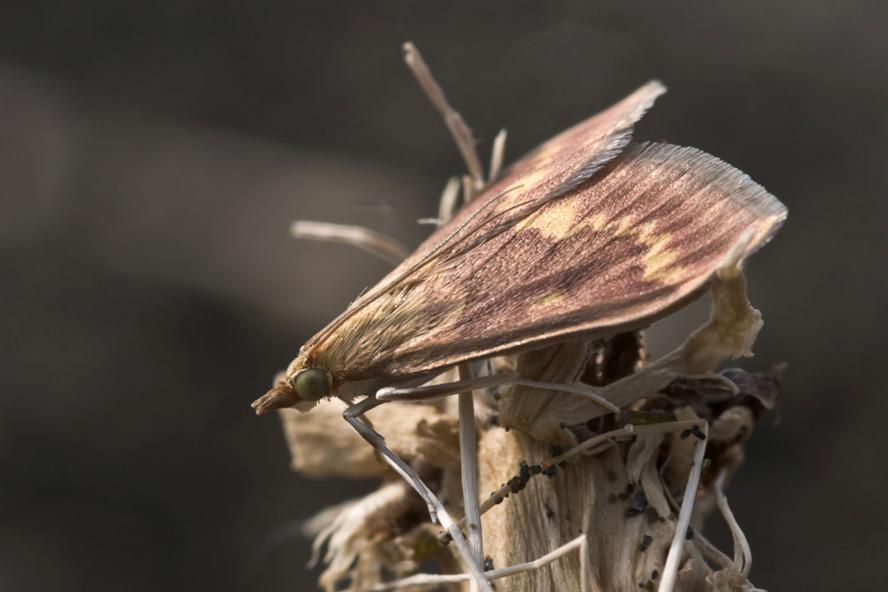Proximate Mechanisms of Phenotypic Evolution
A long-term goal is to characterize the genetic and nongenetic factors contributing to variation in levels of reproductive isolation and overall fit with the environment. In recent years we have successfully characterized the number, genomic distribution, and effect size of loci underlying reproductive isolation between populations of the European corn borer moth (Fig. 3), Ostrinia nubilalis. A significant amount of overall isolation stems from alleles at only four loci located on two chromosomes. Two loci underlie divergence in sex-pheromone behavior and contribute to behavioral isolation—pgFAR controls variation in the pheromone blend released by females, whereas bab influences which pheromone blend is preferred by males. The other two loci, per and Pdfr, help explain an ecological shift in summer reproductive flight that contributes to temporal isolation. One line of research we are pursuing explores how common environmental changes can modify the expression of these traits through individual development and the extent to which standing genetic variation can ‘buffer’ environmental perturbations to allow for ecologically appropriate function. Other on-going work concerns the history of variation. Does divergence in ecology precede behavior, do new preferences precede the origin of new signals? Similarly, do alleles immediately contribute to isolation upon their origin, or have they persisted for long periods within ancestral populations or other species?

Fig. 3. The European corn borer moth — cute up close! Attribution: Sara Gregg.
Selected Publications
- Unbehend, M., Kozak, G.M., Koutroumpa, F., Coates, B.S., Dekker, T., Groot, A.T., Heckel, D.G. and Dopman, E.B., 2021. bric à brac controls sex pheromone choice by male European corn borer moths. Nature Communications, 12(1), p.2818.
- Kozak, G.M., Wadsworth, C.B., Kahne, S.C., Bogdanowicz, S.M., Harrison, R.G., Coates, B.S. and Dopman, E.B., 2019. Genomic basis of circannual rhythm in the European corn borer moth. Current Biology, 29(20), pp.3501-3509.
- Dopman, E.B., Bogdanowicz, S.M. and Harrison, R.G., 2004. Genetic mapping of sexual isolation between E and Z pheromone strains of the European corn borer (Ostrinia nubilalis). Genetics, 167(1), pp.301-309.
- Wadsworth, C.B., Li, X. and Dopman, E.B., 2015. A recombination suppressor contributes to ecological speciation in Ostrinia moths. Heredity, 114(6), pp.593-600.
- Wadsworth, C.B. and Dopman, E.B., 2015. Transcriptome profiling reveals mechanisms for the evolution of insect seasonality. Journal of Experimental Biology, 218(22), pp.3611-3622.